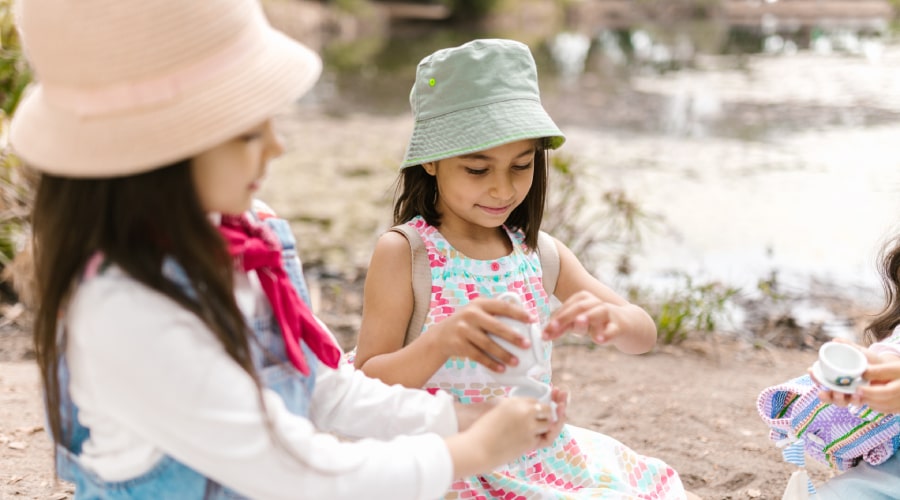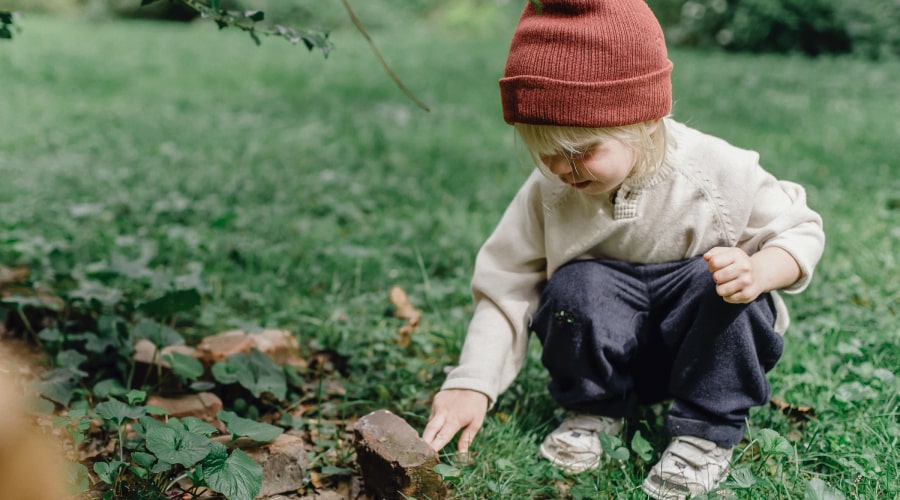settings
children
With Famly since
We talk a lot about play in the Early Years. From why it’s one of the best ways for children to learn, to the best ways to embed it at the heart of your curriculum.
You’ve probably heard of water play, sensory play, and loose parts play more times than you can count. But have you ever heard of heuristic play? Laura England shows why it’s fantastic for children’s development, and how you’re already introducing it to your setting, without even realising it.
Read on for why you should consciously introduce a bit of heuristic play to your routine, how to observe play without interrupting a child’s flow, and 5 top tips to get you started.

What is heuristic play?
First thing’s first - what is heuristic play? Heuristic play describes when babies and young children play and explore with everyday objects. Although you may have never heard of it, you’ve probably witnessed it. For example, when a young child chooses to play with the box rather than the toy that was inside it, that’s heuristic play!
Heuristic itself means ‘enabling a person to discover or learn something for themselves.’ It’s essentially loose parts play with ‘everyday’ materials, but with emphasis on discovering the object itself rather than moving, linking or piecing it together. It’s all about igniting their curiosity, and letting them figure out what can be done with the object rather than just feeling or experiencing it.
It’s a really useful tool when observing and understanding young children, especially babies, as the way they play will tell you a lot about their likes, dislikes and abilities. I strongly recommend having regular heuristic play sessions for that reason.
In the Early Years, this type of play usually happens in a dedicated space with lots of natural and everyday resources such as tins with lids, cardboard tubes, utensils and pinecones. The idea is that there’s an abundance of materials, so that the children can play and explore freely without having to share. Adults don’t usually involve themselves during heuristic play sessions - instead it’s an opportunity to observe young children and babies as they explore freely in any way that they choose.

Why it’s so beneficial for growing minds
Heuristic play has all of the benefits of loose parts play, but there are so many excellent reasons to make it part of your routine. And what are those reasons?
- Although we provide lots of opportunities for exploration in the early years it’s rare that we give young children and babies complete autonomy, as we instinctively want to scaffold learning. Heuristic play promotes independence as young children, and babies are given space and time to explore freely.
- As the items are authentic, everyday materials that children might find in their own daily lives, young children and babies are often even more curious about them and keen to explore them than dedicated ‘loose parts’ materials.
- Our youngest children often have limited vocabulary or are non-verbal, which means that to truly understand their interests we need to observe them closely. Setting aside an uninterrupted 20 -30 minutes for heuristic play not only gives young children time to freely explore, but gives practitioners a set time to really observe and understand the unique child.
- It promotes creativity and critical thinking, as there is no ‘one way’ to use the resources. Young children and babies will learn how different materials interact with each other, providing lots of opportunities for schema exploration.
- Schemas play a vital role in the development of young children and babies, and heuristic play provides excellent opportunities for connecting, rolling, posting, lining up, hiding and dropping.
- Children with additional needs often show repeated patterns of play. I have found heuristic play to be an effective tool for understanding the interests of children who don’t play in a ‘typical’ way.
- It also provides lots of opportunities for developing gross and fine motor skills, as children and young babies grasp items, roll items, shake items and open lids.

Observing heuristic play
When observing heuristic play, you want to ensure that you have adequate space and resources available to allow for complete freedom. If children are limited to small amounts of resources or need to share materials, you’ll miss opportunities to deepen your understanding of what the young child or baby is trying to do.
During observation, try to stay out of the way of the space and resources set aside, maybe sitting in the corner of the room where you’re less likely to distract children from play. I try to limit my interactions to only what’s necessary and encourage the children to explore on their own, so that I am able to observe properly.
You may want to record children so that you can look back on it with your team, or you can simply write down what children are doing in a notebook. It doesn’t need to be fancy, and you don’t need to follow a certain formula. Recording observations is about what the child is doing, and templates can actually throw you off from truly observing.
Once you have completed the session, you can use your recording or written observation to see if there are any links with what the child was doing. Was there a pattern of schema play? Did the child explore a certain sense repeatedly? Was the child interested in one object in particular? All of this will allow you to deepen your understanding of what a young child or baby is attempting to explore and learn. You can then use this information to tailor the continuous provision or the invitations you provide.

5 top tips to get you started
If you’re thinking of setting up a heuristic play station, or thinking about what kind of resources might work best for your setting, here are my 5 top tips to get you started:
- Plan your heuristic play time around caregiving needs. After the children have had a snack and nappy changes have been done is a good time. Just before lunch when they are tired and hungry isn’t such a good time.
- Ask friends/family/parents to save everyday items to be used during heuristic play. Egg cartons, biscuit tins, kitchen roll tubes, corks and cardboard boxes are all great options.
- Collect natural resources such as leaves, pinecones, shells and stones to add to your heuristic play sessions, but be sure that they aren’t a choking hazard by choosing larger ones.
- You might find it useful to dedicate a session to understanding schema preferences, and you could think about using a tally to mark off when you notice a schema in action.
- Make sure your staff all know that you are holding a heuristic play session, that way you can avoid any interruptions.
If you’re looking to learn more about how Laura uses loose parts in her setting, have a look at the piece she wrote about why loose parts unleash children’s creativity.
The big ideas
Get 1000s of free EY activities
Want over 7,000 activities? See them in a free 14-day trial. Filter to target learning areas, age groups and topics, and get inspired.
Get started









